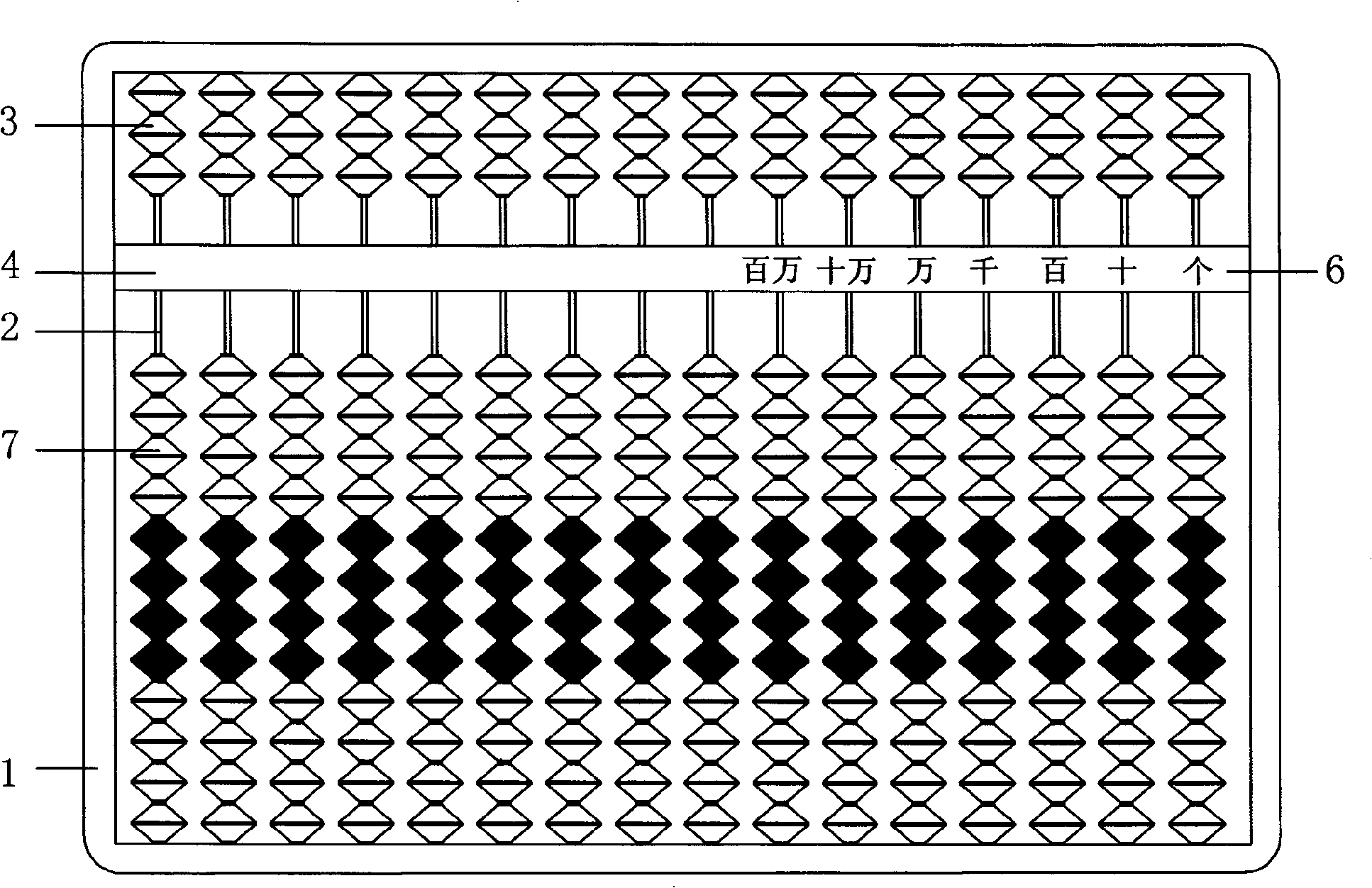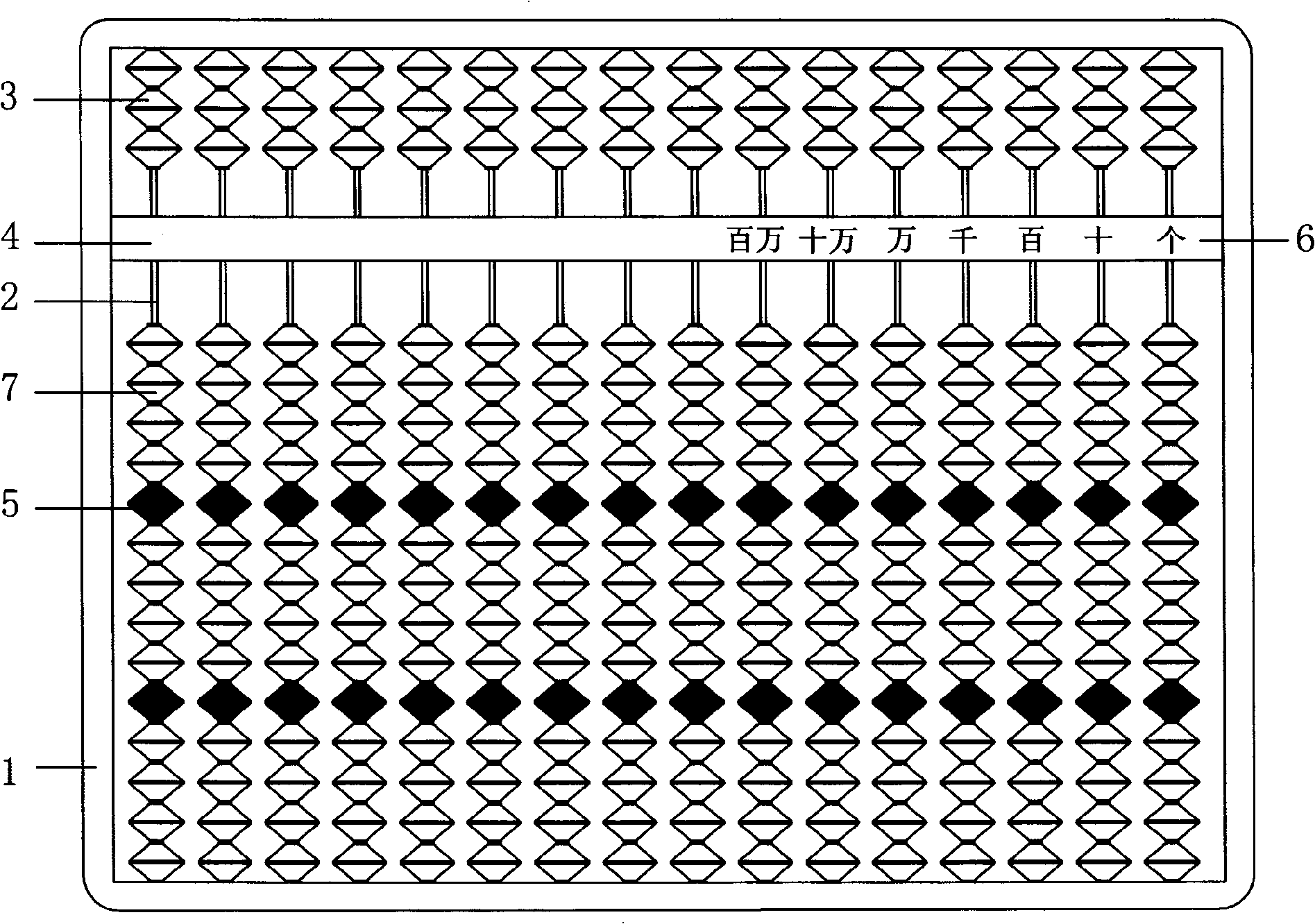Three-number straight-adding and straight-subtracting abacus with three beads on each upper
An abacus and abacus technology, applied in the field of teaching aids, can solve the problems of not encouraging students to learn mathematics, complex learning, and difficulty in understanding, and achieve the effect of easy learning and mastery.
- Summary
- Abstract
- Description
- Claims
- Application Information
AI Technical Summary
Problems solved by technology
Method used
Image
Examples
Embodiment 1
[0068] Such as figure 1 Shown: the upper three formula three number direct addition and direct subtraction abacus is an improvement on the traditional abacus, the upper two upper beads of the traditional "upper two lower five" type abacus are changed into three upper beads (3), and the lower Five lower beads become twelve lower beads (7), which is an "up three and lower twelve" formula abacus, one of the upper beads (3) represents 5, and one of the lower beads (7) represents 1. The middle four of the twelve lower beads (7) of each stage are different colors from the four above and the four below; a digital card (6) is established on the frame (1); the beads of each stage are of different colors represent different bits.
Embodiment 2
[0070] Such as figure 2 As shown: the abacus of the upper three formula and three numbers is directly added and subtracted directly, which is to change the lower twelve lower beads of the "upper three lower twelve" formula abacus into thirteen lower beads (7), which is "upper three lower thirteen" Formula abacus, one of the upper beads (3) represents 5, and one of the lower beads (7) represents 1. The middle four of the thirteen lower beads (7) of each stage are different colors from the top four and the following five; digital cards (6) are set on the frame (1); the beads of each stage are in different colors represent different bits.
Embodiment 3
[0072] Such as image 3 As shown: the abacus of the upper three formula three numbers is directly added and subtracted directly, which is to change the lower twelve lower beads of the "upper three lower twelve" formula abacus into fourteen lower beads (7), which is "upper three lower fourteen" Formula abacus, one of the upper beads (3) represents 5, and one of the lower beads (7) represents 1. The fifth and the tenth of the fourteen lower beads (7) of each gear are different color beads (5); digital cards (6) are set on the frame (1); the beads of each gear are represented by different colors different bits.
PUM
 Login to View More
Login to View More Abstract
Description
Claims
Application Information
 Login to View More
Login to View More - Generate Ideas
- Intellectual Property
- Life Sciences
- Materials
- Tech Scout
- Unparalleled Data Quality
- Higher Quality Content
- 60% Fewer Hallucinations
Browse by: Latest US Patents, China's latest patents, Technical Efficacy Thesaurus, Application Domain, Technology Topic, Popular Technical Reports.
© 2025 PatSnap. All rights reserved.Legal|Privacy policy|Modern Slavery Act Transparency Statement|Sitemap|About US| Contact US: help@patsnap.com



